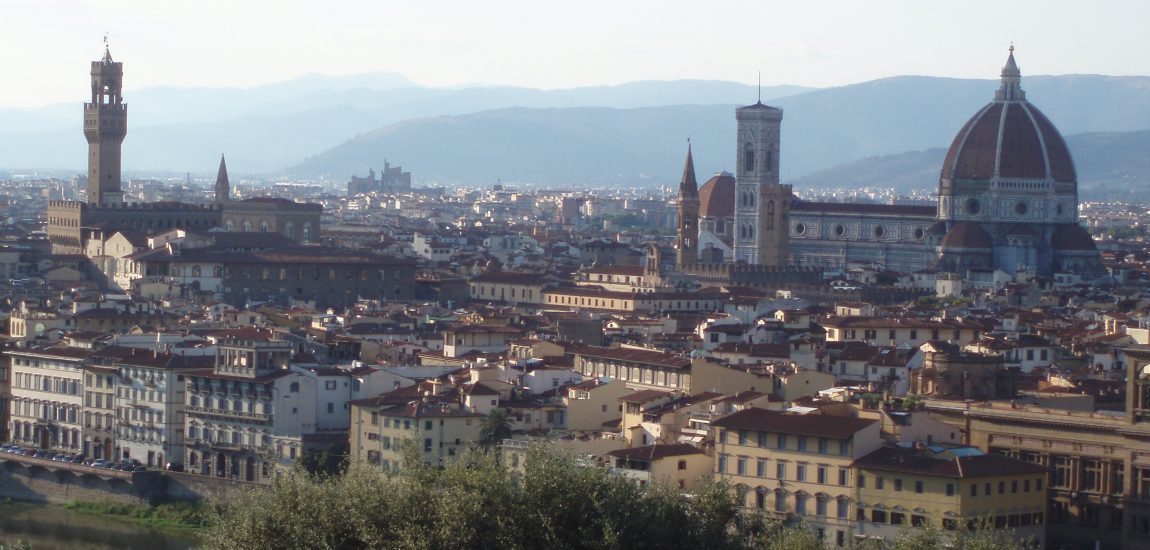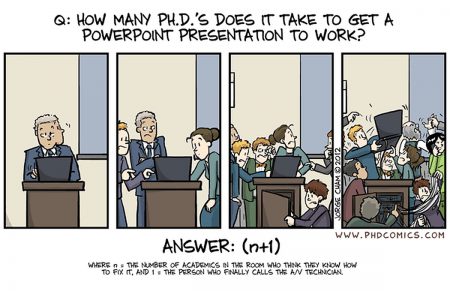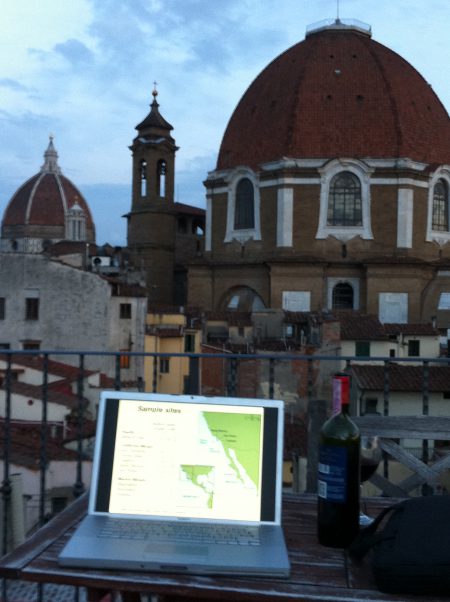
Fun in Florence

My bag’s unpacked, the backlog of emails has been read and sleep deprivation is just about back to normal. I can therefore now look back on what was yet another thoroughly enjoyable and exhausting Goldschmidt conference, and process everything that happened during the week. My main take-home messages include a mental note to self to check whether the caps lock key is on when trying to log into my computer, one inch thick walls that stop two foot from the ceiling do not act as good sound barriers, and (somewhat surprisingly), the world is not flat or made of Styrofoam. Thrown in with these intellectual wonders were a multitude of discoveries of isotopic fractionation where least expected, new constraints on marine element fluxes and novel methods for investigating continental weathering processes. I’ll spare you the details…
Trying to summarise my experience of a conference like Goldschmidt is no easy task. Probably the closest I can get would be to call it packed. This covers just about everything from my flight out of the UK on a bank holiday weekend to Florence itself with so many architectural and cultural wonders crammed into such a small space. I also doubt I’m the only person who got satisfyingly full on the delicious packed lunches before wondering where on Earth I was going to find a space for the box in the overflowing bins. Most of all, packed offers a perfect description of the scientific schedule. With >4000 delegates attending, this was yet again the largest Goldschmidt ever, which resulted in an overflowing auditorium during the lunchtime plenary sessions as well as a huge number of well-attended oral and poster presentations on all 5 days. Whether it’s a reflection of my increasingly broad range of research interests, or simply the fact that more and more people are working on similar scientific issues, I often found that multiple sessions that I wanted to be in were running at the same time, and I would have to choose which keynote talk I attended on the basis of its proximity to the next talk of interest. Of course we can grumble about having had to miss out on such and such a talk because we were in a different session, but in reality this growth is a great reflection of how important geochemistry is becoming for answering a range of scientific issues, and I for one hope that this expansion and development continues far into the future.
Away from the science, the conference provided a great opportunity to catch up with friends and colleagues who are becoming increasingly scattered to all corners of the globe. I also made several new acquaintances, aided no doubt by my introduction to the delights of caffè corretto (thanks go to Mark Rehkamper), and by the fact that many delegates were inescapably drawn to the same bar (with the result that we drank it out of clean glasses on the first night). I also got to take in my fair share of culture, including visiting the breath-taking Medici Chapel and Ponte Vecchio. Unfortunately the usual last minute rush to collect and process all of my data meant I wasn’t as prepared as many and hadn’t pre-booked a ticket for Il Duomo di Firenze or the Uffizi gallery… I’ll just have to save them for a future visit.
Finally, as the dust settles on the conference and attention switches back to making good on our promises of publishing the newly presented data, we should take a moment to acknowledge the immense amount of work put in by the organising committee and EAG officers – one forgets that this was done of their own free will in addition to their regular day job of looking after labs, supervising students, editing journals and (time permitting) doing research. I’m sure that we can look forward to much more of the same next year in Sacremento, as well as discovering whether the vineyards of Italy or California reign supreme!

